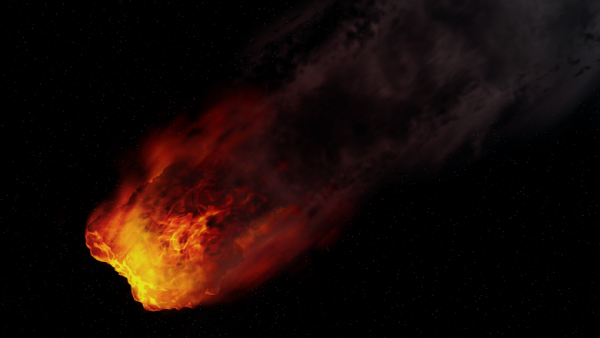Scientists have pinpointed the location of the fall of the mysterious ball of fire: case in Greenland
In July of this year in the skies over Greenland there was a mysterious fire ball caused a powerful shock wave. Nobody still doesn’t know what it was but by chance scientists were finally able to determine the place of its fall!

In July, the sky over Greenland was seen a strange flaming object similar to a meteor. The inhabitants of Qaanaaq (one of the northernmost towns in Greenland) was scared glowing ball that lit up the sky and rocked the ground, forcing the locals (including the police) to wonder if I was a fallen meteorite, a space ship or enemy missile. This happened on 25 July, however, the world found out about it after almost a week, thanks to Ron’s tweet Baalke, a scientist from NASA:
A fireball was detected over Greenland on July 25, 2018 by US Government sensors at an altitude of 43.3 km. The energy from the explosion is estimated to be 2.1 kilotons. pic.twitter.com/EePuk14Pqd
— Rocket Ron ? (@RonBaalke) July 31, 2018.
In a subsequent tweet, the researcher of nuclear weapons Hans M. Kristensen noted that the explosion occurred dangerously close to the air force base in nearby Tula, but:
We are still here, and because they [the BBC] came to the right conclusion. It’s not a threat from the Russians.
Itself a military base in Tula, of course, did not disclose details of the incident.
News As sawed Chelyabinsk meteorite. The convict says geologist
As sawed Chelyabinsk meteorite. The convict says geologist
Early studies suggested that it could be one of the most powerful fireballs in the last year — the event is quite extraordinary. However, now scientists have new evidence that helps interpret the incident. And all thanks to a happy coincidence. The fact that in may the researchers of the project Seismometer to Investigate Ice and Ocean Structure (SIIOS) started the installation of an array of equipment to monitor seismic activity, only 70 km North of Qaanaaq.
The aim of the project SIIOS is the study of earthquakes that can happen on icy worlds (for example, kilometer covered by layers of ice Europe and Enceladus). The easiest way to do with earthly analogues, and the ice sheet of Greenland could not be better suited for these purposes. In the new study, scientists report that sensitive equipment has detected a surge in seismic activity in the area, where the intended point of impact of a space object on the ice — we are talking about a glacier of Humboldt.